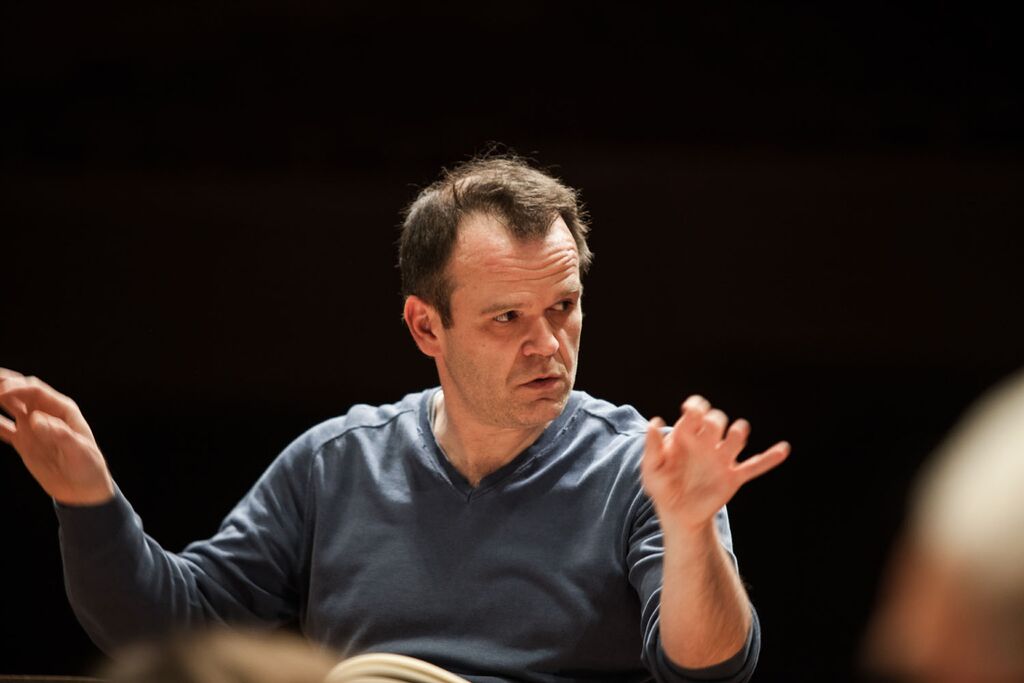Originally posted by edashtav
View Post
Prom 36: Boulez/Ravel/Stravinsky (12.08.15)
Collapse
X
-
I agree, but I would take issue with the bit about audiences and critics being dumbed down (sold short, for sure). I hear the criticism 'dumbed down' a lot. It may seem pedantic, but it is the repertoire that is being dumbed down, not the audience or critic. I think it's an important distinction. Audiences may wonder off (perhaps to different pursuits), but they won't be dumbed down by the music. They just won't be engaged.
-
-
*Wander offOriginally posted by Beef Oven! View PostI agree, but I would take issue with the bit about audiences and critics being dumbed down (sold short, for sure). I hear the criticism 'dumbed down' a lot. It may seem pedantic, but it is the repertoire that is being dumbed down, not the audience or critic. I think it's an important distinction. Audiences may wonder off (perhaps to different pursuits), but they won't be dumbed down by the music. They just won't be engaged.
Comment
-
-
But will they be happy, informed wanderers, Beefy? I stick to my idea that audiences are being dumbed down - it's the inevitable result of not being stretched. Our minds are muscles and like our limbs they need to be trained and toned.Originally posted by Beef Oven! View Post*Wander off
Comment
-
-
Thanks, ferney, that's a lovely and insightful read (.. would you mind specifying in the What Are You Cooking thread, exactly what you put in your breakfast each morning?..).Originally posted by ferneyhoughgeliebte View PostSticking with Figures - Doubles - Prisms - what seems most obvious to me is a piece that's based on the interaction (conflict and cooperation) between two different types of Musical activity: staccato ostinato perpetuum mobiles and sustained/"floating" sounds [...]
The description of yours above, reminds me a little of Satie's short piano piece L'Incantation . I wonder very fancifully if there might be a drop of ancestry between the two.
Figures-Doubles-Prismes is a bewitching piece, I have the impression, as I often do with Boulez, of him showing us something beautiful in this piece, without ever revealing his feelings about the material. Perhaps this is what gives the music some of its crystalline quality ... it remains uncluttered by viewpoint, no matter how busy the dots are.
I don't feel I have enough of a perspective to say whether Boulez might be dated or not (I haven't read the artsdesk link yet), but I can say the experience of listening to his music feels the intellectual equivalent to me, of sitting by a glacial spring on a hot day, and is unlikely to go out of fashion up these parts anytime soon.Originally posted by jayne lee wilson View PostHere's another view on Artsdesk...
 The pulling power of the BBC Proms was in action last night, as a virtually full Royal Albert Hall settled down at 6.30pm, and braced itself for 22 testing minutes of restless, angular, unforgiving 1960s Boulez.The audience had been lured in by the gentler fare that was to come in the second half, but Boulez's Figures - Doubles - Prismes, under the taut control of its pulse by François-Xavier Roth, definitely left its mark.
The pulling power of the BBC Proms was in action last night, as a virtually full Royal Albert Hall settled down at 6.30pm, and braced itself for 22 testing minutes of restless, angular, unforgiving 1960s Boulez.The audience had been lured in by the gentler fare that was to come in the second half, but Boulez's Figures - Doubles - Prismes, under the taut control of its pulse by François-Xavier Roth, definitely left its mark.
fhg - what do you make of Scotney's comment here about the Boulez (second paragraph), that "his postwar experimentation phase now feels very dated indeed." ?
Comment
-
-
I doubt that Boulez would appreciate Satie being suggested as one of his ancestors - he said something to the effect that the only thing of value in Satie's work were the titles - but then I've just read Bryn's comment that Boulez conducted the three "Turangalila" movements from that eponymous Symphony, which I wouldn't have thought possible, either! (They are the least "bordelloesque", admittedly!)Originally posted by Daniel View PostThe description of yours above, reminds me a little of Satie's short piano piece L'Incantation . I wonder very fancifully if there might be a drop of ancestry between the two.
Thanks for the thanks, too - and as for breakfast: porridge, of course! ('Tho' I always leave breakfast for later in the morning - between 10 & 11.)[FONT=Comic Sans MS][I][B]Numquam Satis![/B][/I][/FONT]
Comment
-
-
I can't recall the source of this, but I'm sure I either read or heard somewhere that Boulez conducted those particular movements because the were the least disaccordant with the side of Messiaen he disapproved of, as represented by the rest of Turangalila. I have to say I would have been on his side.Originally posted by ferneyhoughgeliebte View PostI doubt that Boulez would appreciate Satie being suggested as one of his ancestors - he said something to the effect that the only thing of value in Satie's work were the titles - but then I've just read Bryn's comment that Boulez conducted the three "Turangalila" movements from that eponymous Symphony, which I wouldn't have thought possible, either! (They are the least "bordelloesque", admittedly!)
Comment
-
-
"A perky little tune at 11:00 - 11:30..." said fhg of Figures-Doubles-Prismes...
Well, I thought that gives me something to hang on to...
But it didn't quite turn out like that.
Noting the key phrase in the Erato notes, "formally, it is conceived as a great cycle of variations whose components interpenetrate each other instead of remaining isolated in the traditional manner", I went back to Boulez' own recording with the BBCSO from 1985. From the very start, how much clearer the contrast is between sustainment and attack; but also a shapelier feel to those aggressive outbursts, a strikingly lyrical flow, a coloristic beauty, to the quieter music. (Roth was less subtle here, over 2'00 faster than Boulez overall. Robertson, much closer to Boulez).
This section, up to 6'00 or so, seems to me to represent the "Figures" in their barest form, though all three concepts cut across each other throughout.
At around 6'05 (5'45 in Roth), soloistic/divided strings present what seems like a new idea: let's call this the "theme". The attacking figures return, but the theme (gentle & songful, often with a "trotting" rhythm) keeps surfacing in various shapes and instrumentations: at 7'00 (6.45 Roth) tuned percussion take it up (Boulez again strikingly tender and lyrical here). Over the next two minutes or so, the theme keeps emerging against those sudden, angular attacks. The aggressive "Figures" are now interpenetrating the melismatic ones, all as... "Doubles" - i.e., as variations.
Listen for the longer episode of the theme on winds, pizzicato strings & tuned percussion from 9'00 (8'45 Roth).
At 11'00 (ca.10'15 Roth), there is a big outburst, like a brief climax; the theme now starts to diffract into ever more fantastical colours and shapes - but still comes back into easy audibility again on winds, percussion and timps. (By now, those drum & trumpet fusillades should sound very familiar, almost a "theme" themselves.)
At 12'55 (12'35 Roth) A solo violin starts to sing, and the earlier "theme" and the other contrasting Figures are far less recognisable. I think this is where the "Prismes" move into the foreground, as all the strings take up the cantilena, and reach a climactic intensity against very sustained wind chords, which sound like static, sonic spectrographs of the music soaring around them. An extraordinary passage - how far we've come from the opening, starkly oppositional Figures!
Finally at 19'00 (16'00 Roth) something very like a coda begins, but here's the twist: yes, it's that instantly recognisable theme again, but this time losing its regular trotting rhythm, conjoining with those aggressive brass Figures from earlier sections, into an exhilarating rush of notes to that cliff-hanger ending!
I had imagined having to listen to F-D-P for forty days and forty nights, forsaking all other, to get anywhere with it. Well, 5 hearings in 3 different performances across 48 hours seems to be enough - at least to mark the beginning of the possibility of a listening competence...Last edited by jayne lee wilson; 16-08-15, 04:54.
Comment
-






Comment